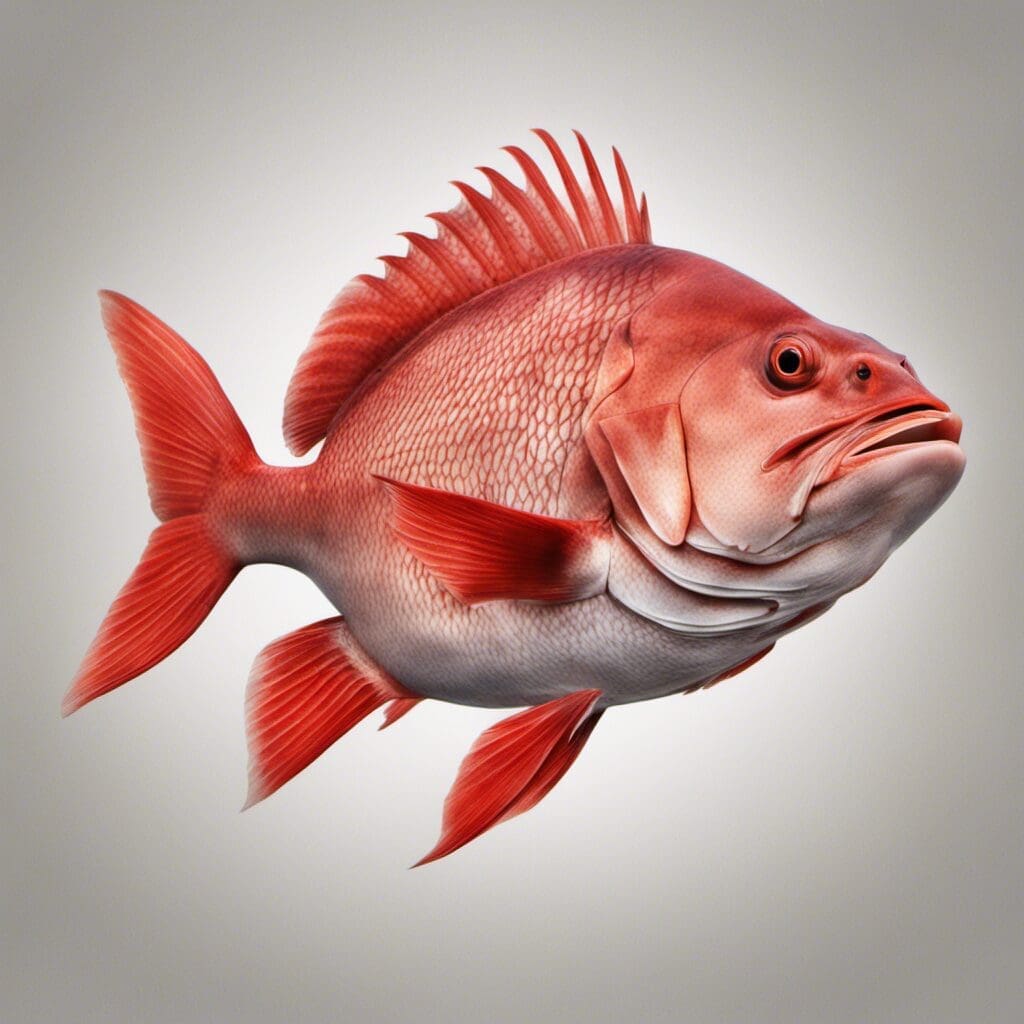Introduction
The Red Emperor or Snapper (Lutjanus sebae) belongs to the family of Lutjanidae, comprising the true snappers, a group of percoid fishes.
Conservation Status
The Red Emperor is not considered to be at risk and hence, it’s not on the International Union for Conservation of Nature’s (IUCN’s) Red List of Threatened Species. Although the fishing pressure is quite high, current management practices in its range help ensure that populations remain healthy.
Statistics
| Average | Range | |
|---|---|---|
| Length | 65 cm | 40 cm - 116 cm |
| Weight | 7 kg | 1.5 kg – 15 kg |
| Average Lifespan | 9 years | |
Distribution
Snappers are widely distributed throughout the Indo-Pacific region, from the Red Sea to New Zealand and the Line Islands. Although they have not known to make extensive migrations, a slight shift towards more tropical, offshore waters occurs during the winter.
Habitats
These snappers thrive in a variety of water types including marine, brackish, and fresh. Their depth range spans from coastal shallows down to approximately 180 m. They are flexible with temperatures, but prefer warmer subtropical to tropical waters.
When and Where to See
Snapper populations are most visible and accessible during the summer months. The best time to see snappers is at dusk and dawn when they are most active and feeding.
Best Fishing Locations
- Great Barrier Reef, Australia
- Western Australian coast
- Gulf of Carpentaria, Australia
- Queensland coast, Australia
- Cape York Peninsula, Australia
- Ningaloo Reef, Australia
- Fraser Island, Australia
- Coral Sea, Australia
- South China Sea
- Indian Ocean
General Tips
Snappers are generally found near structures like reefs, wrecks, and oil rigs. Look for a change in water depth and currents.
How to Catch
Popular baits for snappers include pilchards, squid, and octopus. Fly fishing, trolling, and bottom fishing are all successful methods. They are most susceptible during the early morning and late evening.
Identification Guide
Red Emperors have a striking pinkish-red color, and a triangular-shaped head. They have a thin, deep body with a sharply forked tail. They’re easily distinguishable from similar fish species by their size, and the blue lines across their cheeks and around their eyes.
Culinary Information
How to Cook
Red Emperors are a highly prized food fish with sweet, white, finely textured flesh which can be grilled, fried, steamed, or used in soups.
Nutritional Information
The Red Emperor is rich in protein, low in fat, and a great source of Omega-3 fatty acids.
Additional Information
Behavior
Snappers feed on a diet of fish and invertebrates. They are solitary creatures, but have been known to form schools. Their spawning habits occur in deeper offshore waters.
Predators and Threats
Natural predators of the Red Emperor include larger fish and sharks. The main threat to their populations is excessive fishing and habitat destruction.
Cultural/Historical Significance
Red Emperors are highly sought after by commercial, recreational, and traditional indigenous fishers, particularly in the northern half of Australia.
References and Further Reading
- Encyclopedia of Life, Red Emperor Snapper
- Fishes of Australia, Red Emperor

